The Irish are often described as a nation of storytellers – just keep an ear out in any local pub or post office queue to confirm the truth of that. The power of the spoken word to move, amuse and bond us together is at the root of our seanchai custom. In pre-literate times or when teaching through Gaelic was outlawed, our tales had to be committed to mind and carried in the heart, to be handed down in an oral tradition.
Ireland’s Ancient East truly brings the art of storytelling to life, with our historians, tour guides, performers, and indeed locals, among those keeping that spirit alive. Fables, folklore, and very real human stories told with wit, wisdom and a flair for the theatrical transport you to a world of swashbuckling legends, marauding Vikings, pirates, convicts and gripping tales of fairy folk, ghosts and JFK.
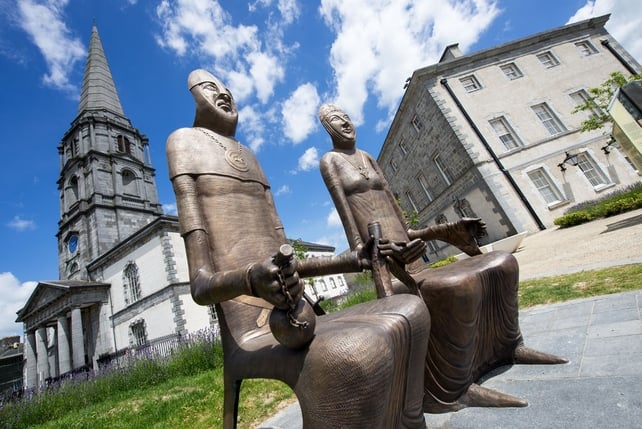
Donnchadh O’Ceallachain is curator of Waterford’s Museum of Treasures, where at Bishop’s Palace, larger-than-life costumed guides take visitors on an ‘Epic Tour’ between 1,100 years of history from the Vikings to the Victorians. There’s a chance to play a part in the story yourself, posing as Strongbow and Aoife getting married or as 1848 rebel leader Thomas Francis Meagher flying the Tricolour for the very first time in Ireland.
Like his colourful tour guides, Donnchadh has a knack for regaling visitors with stories that move you from past to present with ease, from the quirks of the royal courts to the roots of our present-day habits. Hear how King Richard II brought the concept of a handkerchief to Ireland – “a tale not to be sneezed at!” - or how French settlers brought the tasty floury bap known locally as a ‘blaa’ over with them more than 300 years ago.
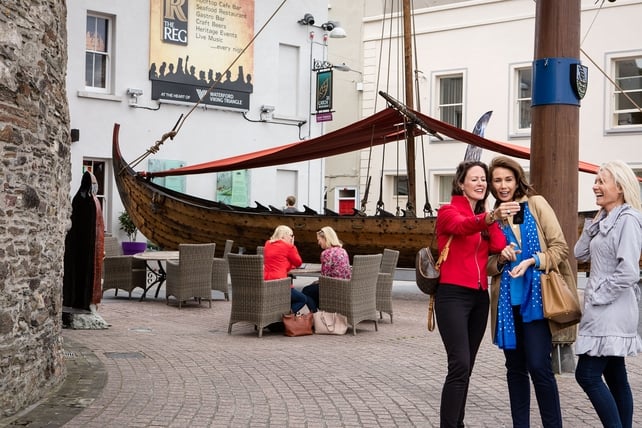
Donnchadh favours the weird and wonderful characters of the past like Waterford’s own Fr Luke Wadding who, in the 17th Century, witnessed the secret exhumation of a Franciscan friar in the dead of night by members of the order. “When the grave was opened, the body of Fr Lucker was found to be intact - everything in perfect condition,” he says. Fr Wadding has had a lasting effect on Ireland. “He was in charge of creating the official list of saints of the Catholic Church in the 1600s, and so fixed St Patrick’s Day to the 17th of March – a day now celebrated across the world!”
Strange and quirky tales, told with passion by dedicated tour guides connect visitors with the past, fire the imagination and bring meaning to their experience. Tales of comings and goings, maritime adventures and disasters, conquerors from distant shores, emigration and famine ships flow like the tides in Ireland’s Ancient East.
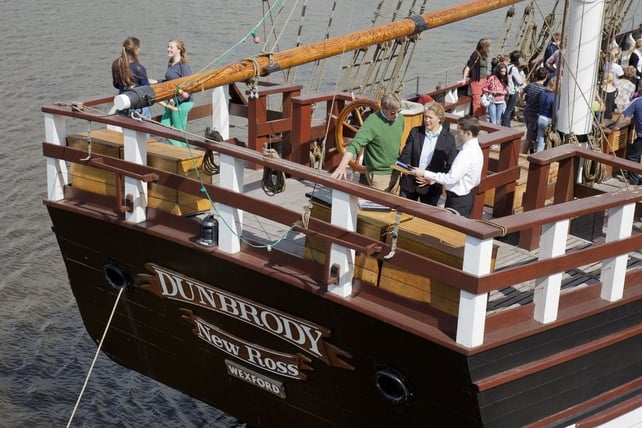
Jason Rowe, of the Dunbrody Famine Ship and Irish Emigrant Experience has plenty of knowledge to share with the visitors who regularly pack the replica ship. The permanent nautical museum is in the pleasant outdoor setting of New Ross Harbour, Co Wexford.
Jason says: “Our tours are very family-orientated at this time of the year, mums and dads coming in with the kids, which actually reflects the make-up of many of the passengers whose stories we are telling. On the ship, these characters literally step out of the shadows in costume and begin to tell their own tales, be it a prosperous first-class business woman or one average labourers. Ordinary families looking for a new life abroad would be in close quarters with people already famine-stricken and ill over the six-to-eight-week voyage.”
Although it’s a tragic story, Jason’s unique and humorous way of imparting the human details can really bring home the bleakness of the journey - like the fact that there were only 10-15 ‘toilet ducts’ between all these people.
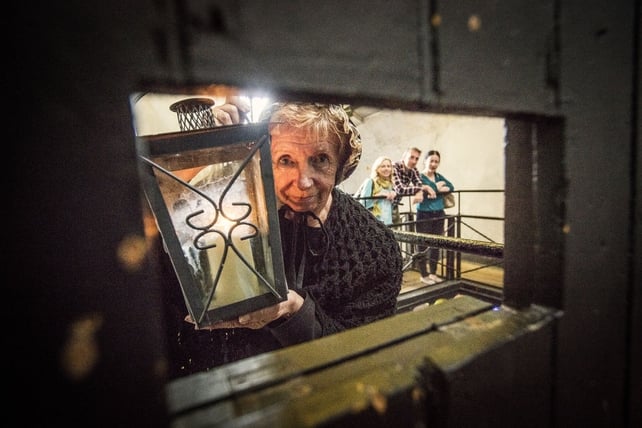
Smell the terror in the air as the gate clangs shut and the gaoler turns the key at the brooding edifice that is Wicklow Gaol. Dramatic re-enactments bring to life the plight of prisoners at this allegedly haunted prison. See evidence of their incarceration in the graffiti on the cell walls and read thoughts they left in a notebook only rediscovered in 1923. As well as the regular daily tours, the prison has an adults-only night tour where visitors must brave darkened cells as actors depict chilling aspects of life behind bars in a bygone era.
Guide James Murphy says: “The building is teeming with stories about the people who would under normal circumstances be forgotten. Our job in the Gaol is to keep these stories alive. The descendants of convicts often come back to visit us. The families of rebel icons Hugh Vesty Byrne and Robert Erskine Childers visited in recent months, as well as the great-great granddaughter of convict Eliza Davis, banished to Tasmania in 1845.”
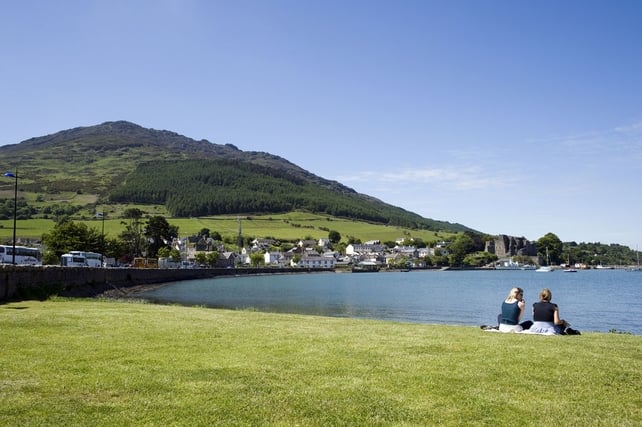
Ireland’s Ancient East is bursting with these tales of drama, tragedy, humour, hope and happiness. There’s a lot of romance in the air too…and with marriage proposals becoming ever more elaborate in the modern age, some might consider going back to old-fashioned ways, to pop the question at a Proposal Stone. These are believed to be close to fairy trees and forts, where lovers sat whispering sweet nothings, and any match made was said to be lucky and lasting, blessed by the wee folk. From the 18th century onwards these rocks began to be moved into churchyards by clergy to discourage any shenanigans and so fell out of use. But you’ll still find some at the water’s edge in the devastatingly romantic location of Carlingford Lough – perfect if you’re looking for a beautiful location for an engagement selfie.
Get a true taste of the magic of Ireland’s Ancient East and let passionate storytellers bring you on a remarkable journey through time.
Great stories stay with you forever...find yours via Ireland’s Ancient East on www.irelandsancienteast.com.
Did you like the article? Complete this SURVEY as we would love to hear your thoughts on Ireland's Ancient East.


